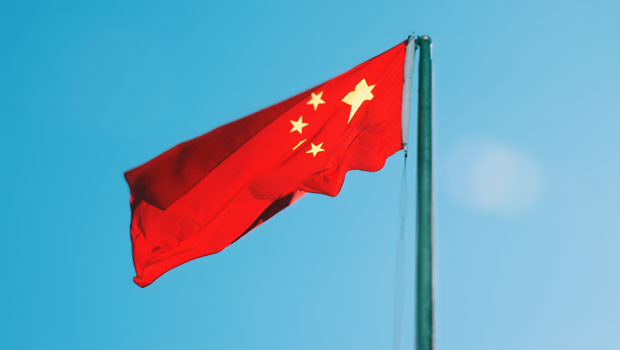Asia report: Markets mostly fall as prices rise in China

Asia-Pacific markets finished with a mixed but mostly weaker performance on Monday, with investors closely analysing China’s April inflation figures.
Patrick Munnelly, market analyst at TickMill, said strong gains in Hong Kong and mainland China were counteracted by losses in Japanese and Australian stocks.
“The surge in Chinese stocks occurred despite US president [Joe] Biden's weekend announcement of quadrupling tariffs on Chinese electric vehicles,” he noted.
“Additionally, weekend data from China revealed a decline in credit in April, indicating weakened economic demand.
“There is a cautious sense of optimism about China's economy, but this may be put to the test by the release of monthly activity data for April on Friday.”
Munnelly said it was expected that there could be a slight improvement in industrial output, retail sales, and urban investment, following last month's lower-than-expected figures.
“The unemployment rate is expected to remain unchanged, while house prices are likely to continue their weak trend after a significant drop in March.
“Additionally, April credit data may also be made available this week.
“Despite sluggish loans and credit data, the People's Bank of China is expected to maintain the one-year medium-term lending facility rate at 2.50% on Wednesday, as it continues to prioritise currency stability.”
Most markets start the week in the red
In Japan, the Nikkei 225 edged down 0.13% to close at 38,179.46, while the Topix slipped by 0.15% to 2,724.08.
Among the biggest declines on Tokyo’s benchmark was Shimizu, plummeting 8.9%, followed by Taisei which lost 8.12%, and Secom, which was off 7.87%.
China’s markets also showed a modest downturn, with the Shanghai Composite dropping by 0.21% to 3,148.02 and the Shenzhen Component declining by 0.6% to 9,673.32.
Anhui Sun Create Electronics and Beihai Gofar Marine Biological Industry were among the biggest losers in Shanghai, shedding 8.48% and 7.55%, respectively.
In contrast, Hong Kong’s Hang Seng Index bucked the trend, registering a modest gain of 0.8% to reach 19,115.06.
Key companies such as Orient Overseas International, WuXi AppTec, and Sands China saw increases of 5.95%, 4.46%, and 4.24%, respectively.
South Korea’s Kospi experienced marginal fluctuations, ending the day almost unchanged at 2,727.21, although Netmarble Games faced a decline of 6.2%.
Australia’s S&P/ASX 200 remained relatively steady, inching down by just 0.01% to settle at 7,750.00, with Fletcher Building and De Grey Mining seeing significant drops of 10.87% and 5.69%.
New Zealand’s S&P/NZX 50 witnessed a more pronounced decline, slipping by 0.88% to 11,652.16.
Fletcher Building was also the biggest loser in Wellington, falling 9.69%, while ANZ Group Holdings dropped 4.08%.
In currency markets, dollar was last 0.05% stronger on the yen, trading at JPY 155.86.
The greenback meanwhile weakened slightly against the Aussie, dipping 0.11% to AUD 1.5126, while it managed gains of 0.1% on the Kiwi to change hands at NZD 1.6629.
In oil markets, Brent crude futures were last up 0.29% on ICE at $83.03 per barrel, while the NYMEX quote for West Texas Intermediate advanced 0.33% to $78.52.
Prices rise faster than expected in China
In economic news, China saw a faster-than-expected increase in consumer prices in April, according to fresh data from the National Bureau of Statistics over the weekend.
The consumer price index (CPI) recorded a 0.3% rise year-on-year, surpassing the 0.2% forecast by economists polled by Reuters.
That uptick followed a 0.1% rise in March.
At the same time, China’s producer price index (PPI) showed a 2.5% decline compared to April last year, marking a slight improvement from the 2.8% drop in the previous month.
Meanwhile, China’s finance ministry confirmed its intention to start sales of long-term special treasury bonds worth CNY 1trn (£110bn) this week.
That followed rumours of such a sale, as reported by the Financial Times and Reuters.
The ministry outlined issuing seven tranches of 20-year bonds starting from 24 May, while 30-year bonds would be sold in 12 tranches between 17 May and 15 November.
Additionally, bonds with a 50-year duration would be issued in three tranches, also starting on 17 May.
Elsewhere, the Australian government was optimistic about its inflation trajectory, expecting it to fall within the Reserve Bank of Australia’s target range of 2% to 3% by the end of 2024, according to a report from Reuters.
The country’s treasurer Jim Chalmers highlighted ongoing efforts to combat inflation in a media interview on Sunday.
“We’re making progress in the fight against inflation, but it’s not mission accomplished because people are still under the pump and that’s why inflation’s a big focus of the Budget,” he said over the weekend.
Australia’s federal budget announcement was scheduled for Tuesday.
Reporting by Josh White for Sharecast.com.